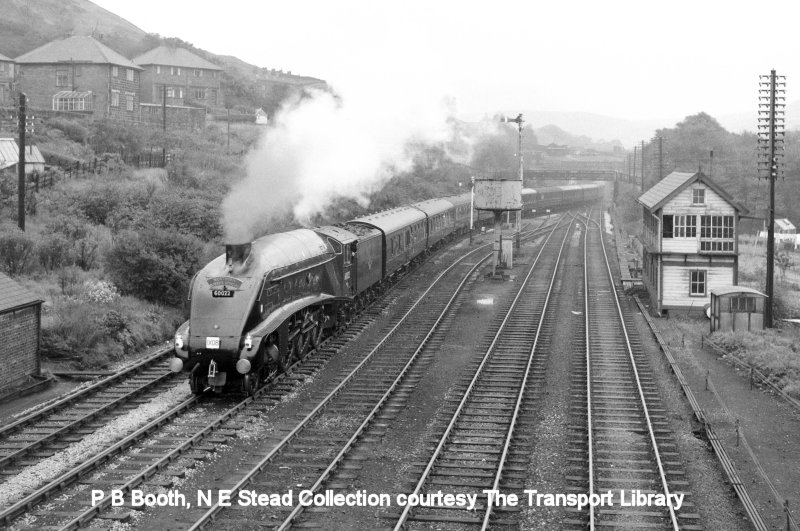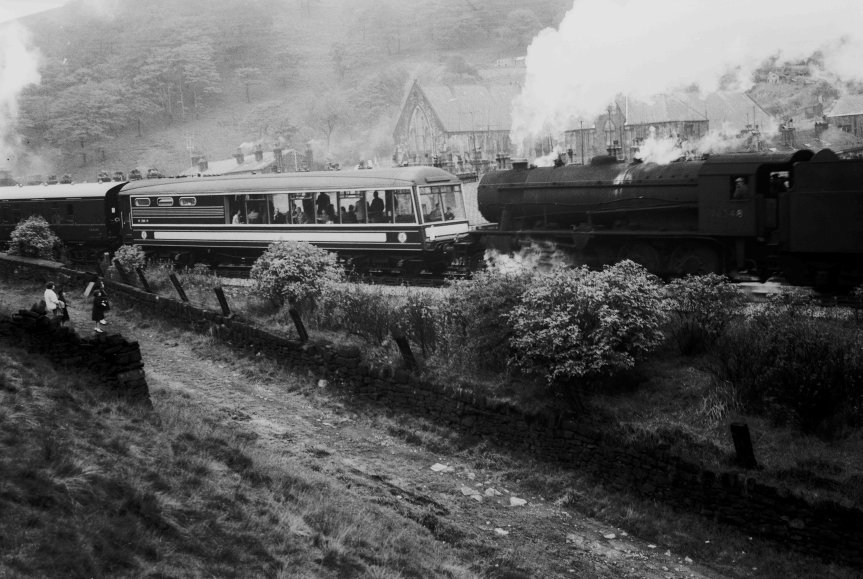
The 'Northern Rubber' Special:
did 'Mallard' really leave the banker behind?
The Northern Rubber Company had one A. F. Peglar (AFP) as its Managing Director. Mr Peglar was also a member of the British Railway's Eastern Region board, and was, of course, Chairman of the Festiniog Railway Company, which he had acquired a controlling interest in in 1954.
Northern Rubber was celebrating its 90th year in 1961 and AFP was looking for a suitable way to mark the occasion. AFP had already organized a number of rail specials in earlier years, and, according to MJ Wilson in an article in the December 1961 issue of 'Trains Illustrated', had previously used Class A1/1 4-6-2 60133 'Great Northern'. According to MJ Wilson, preliminary enquiries were made through the BR Commercial Management at Doncaster in February 1961 for the use of 'Mallard'. Subsequently the LMR's Engineer's Department subsequently evaluated the route, as an A4 had not previously been routed via Copy Pit to Blackpool. It apparently took six months for the evolution to be completed, and permission was give, subject to the train should be banked over Copy Pit summit.
The train consisted of 12 cars, and was to have a minimum capacity of 320 passengers. AFP envisaged two kitchen cars and a buffet car in the centre of the train for use as a bar. The planning included AFP noting the efficiency of various catering crews on his travels, and he specifically asked for the conductor and chef from the afternoon 'Talisman'. The date of the train also allowed the Observation Car M280 to be released by the Scottish Region at the end of the summer season on September 23. Two sleeping cars were also ordered to replace the Observation Car on the return journey which started at midnight.
Lunch was to be served on the outward and dinner on the return journey; two different menus and two different, very large stocks of drinks ordered. We are not told who qualified for what type of drink; but whatever, AFP obviously had a very clear idea of what was needed for his special. BR aoso provided what is described as a 'special representative' to supervise the various arrangements.
MJ Wilson tells us that AFP drew up the seating plan on a large scale and 'allocated seats in the most socially convenient way'.
Timing issues meant that the special had to connect with the down 'West Riding' at Retford, but arrive in Blackpool in time for a football match. On the return it had to connect at Doncaster with the up 'Aberdonian' and at Retford with the Manchester - Grimsby mail.
On page 28 of Railway Memories No. 11 - Halifax and the Calder Valley by Jack Wild and Stephen Chapman there is a photograph of Gresley Pacific A4 'Mallard' turning onto the Burnley line with the special on 30 September 1961. The caption suggests that the A4 left the WD banker 'standing' as the Pacific accelerated its train away from the Junction and up to Copy Pit. The 12 -coach train weighed in at 418 tons tare and 445 tons gross. The train is seen shortly before it paused at Stansfield Hall Junction to pick-up the banker. However M Wilson tells us that 'WD' 2-8-0 No. 90348 provided 'some vigorous rear-end assistance up the initial 1 in 71 and 1 in 143, speed rose to 34.5 mph and then dropped slightly to 30 on the final 1 in 68-70 that leads to Copy Pit Siding.'
Photographer P B Booth, Copyright Neville E Stead Collection, reproduced courtesy the Transport Library.
But there were two photographers on the Hall Royd Road bridge that day, as standing slightly to the left of P B Booth was Eric Bentley, whose similar photograph, taken within a nanosecond, appears in Ian Allen Publishing's 'Steam Trails: Manchester to Leeds' on page 34. There are four people standing on the approach ramp to the footbridge in the distance. This would seem to suggest that even at this time the main decking was judged to be unsafe: there are also two people inside the railway boundary fence just to the left of the signal box. You can tell that the shutters were clicked at virtually the same time by the position of the third coach in relation to the signal. The story of the Pacific showing the WD banker a clean pair of heels is again repeated.
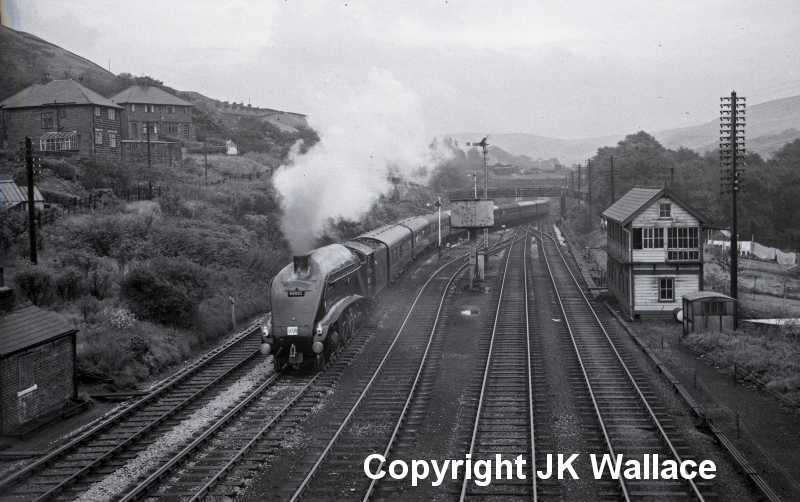
Neil H writes: "Our bathroom window was literally ten feet from the down line and when Mallard passed in 1961 I could more or less lean out and touch it! I remember it well, even though I was only seven. The WD banker would have come on outside our house, as that's where they did so for all trains. "
Eric Bentley must have left Hall Royd Road bridge immediately as his next two photos were taken from Stubley Lane, up at Cornholme, just a mile or so short of the summit at Copy Pit. The first of Eric's photos showed 'Mallard' steaming away, and the second shows the banker still firmly up against the ex-Devon Belle Observation Car, then numbered M280. Google calculates that the distance between Hallroyd Road and Stubley Lane is 2.9 miles or 9 minutes, so even allowing for taking on the banker, it would have been a close run thing for Eric.
Eric F Bentley's personal records reads...Copy Pit 90348 (56A Wakefield) banking the 'Northern Rubber' special (Retford to Blackpool) up to Copy Pit summit, taken at 13:05 on Saturday 30 September 1961. And here is his photograph:
Photograph Eric F Bentley, Copyright: J K Wallace, all rights reserved 2013
The photo clearly shows the WD buffered up the ex-Devon Belle Observation Car, under steam and well advanced in the journey up to Copy Pit. The 'feathering' at the safety valves may suggest that 'Mallard' was doing much of the pulling, and so the banker was easily keeping up with the train; but whatever, here is photographic evidence that even Gresley's finest still couldn't totally shake off the WD slogging away at the back.
Meanwhile, on the other side of the tracks was Norman Sutcliffe's father, and Norman has has kindly provided a sequence of shots taken by his father showing 'Mallard' approaching and passing Cornholme signal box, and finally the tail of the train with the WD, clearly not having been prepared in any way for such an illustrious role!
The train was slightly late: Sixbell Junction website has a copy of the timetable for the train which shows it due at the Copy Pit at 13:04, so about 4 minutes down at this point.
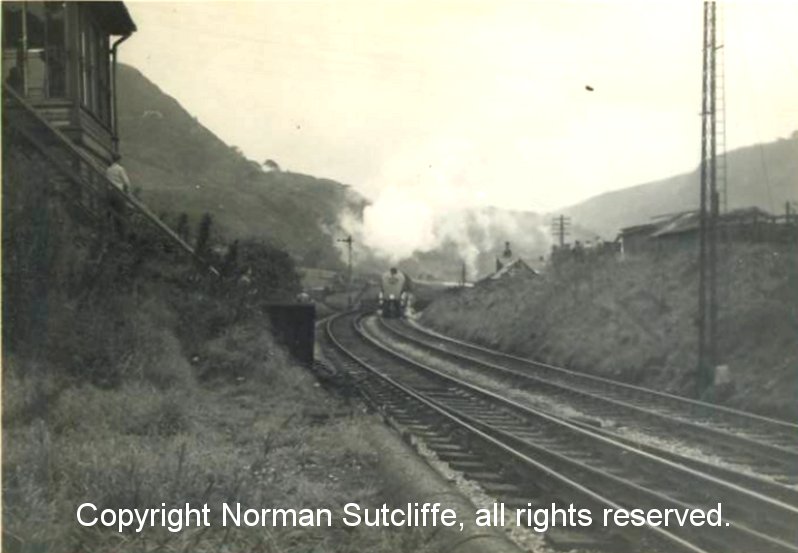
Photographer Jack Sutcliffe; Copyright Norman Sutcliffe, all rights reserved.
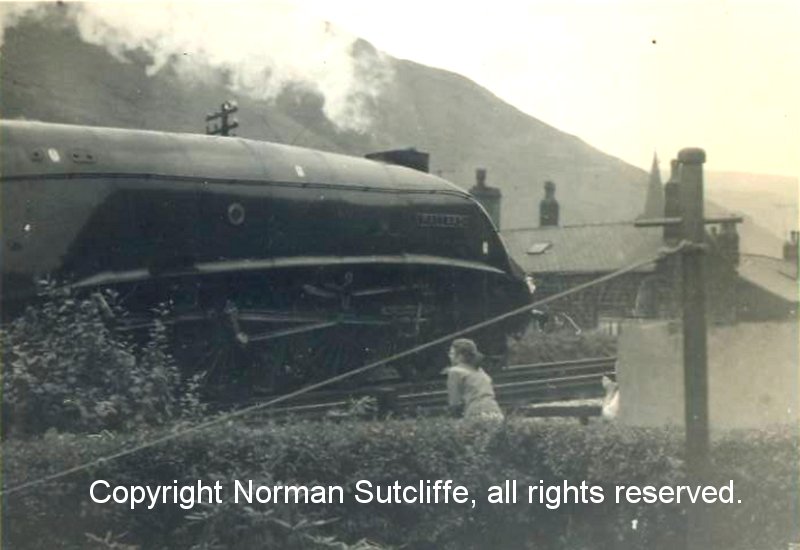
Photographer Jack Sutcliffe; Copyright Norman Sutcliffe, all rights reserved.
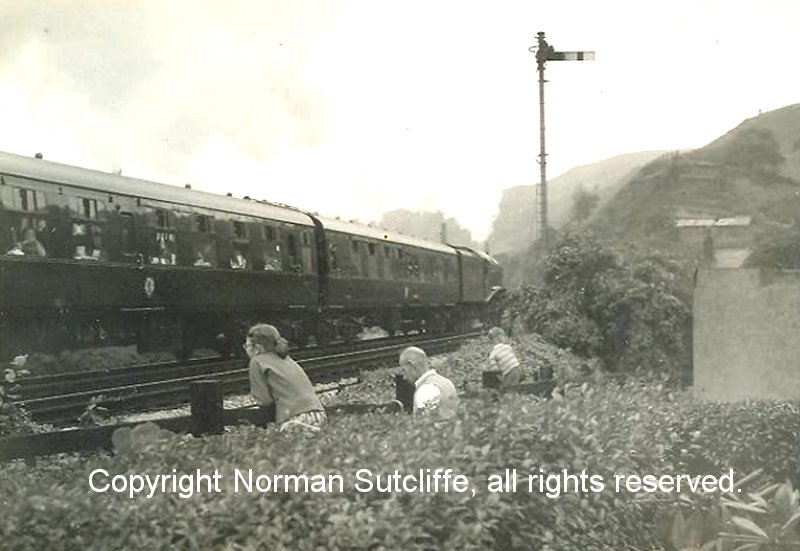
Photographer Jack Sutcliffe; Copyright Norman Sutcliffe, all rights reserved.
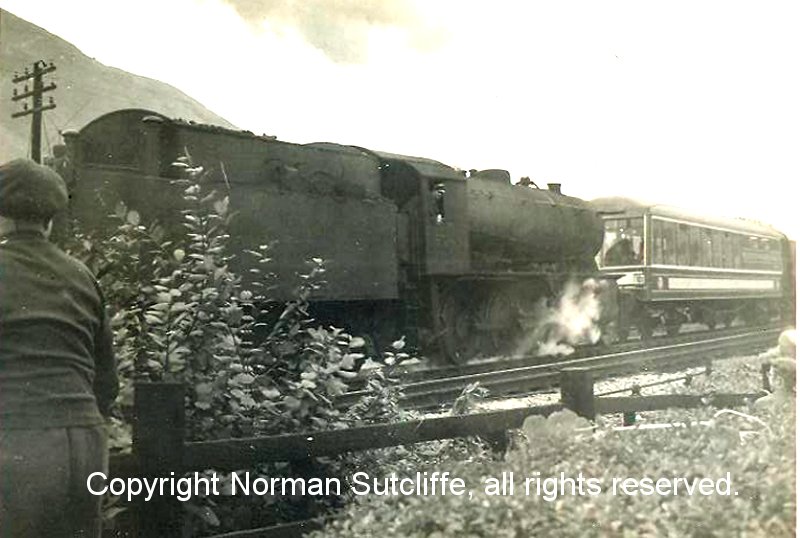
Photographer Jack Sutcliffe; Copyright Norman Sutcliffe, all rights reserved.
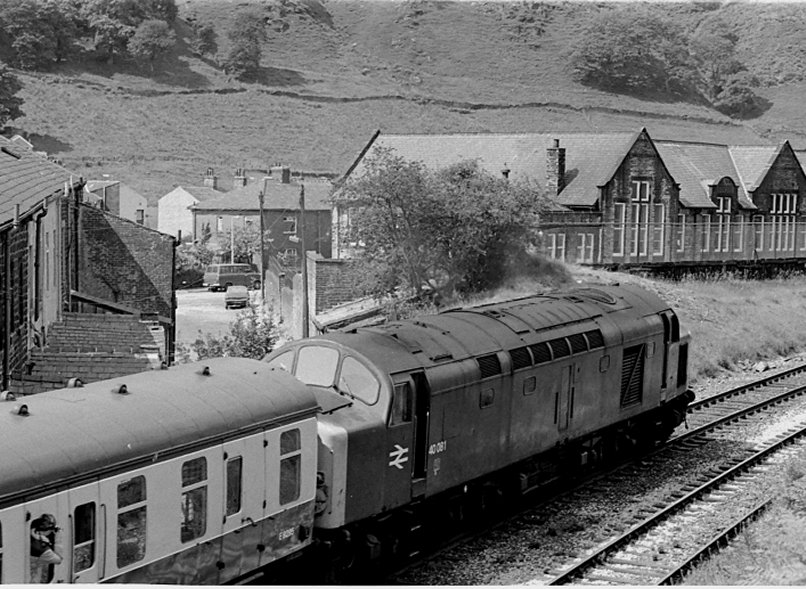
Copyright: J K Wallace, all rights reserved 2013
Sadly, there was a companion shot taken from the same location showing 'Mallard' steaming merrily away at the front which we were unable to acquire, but as this is a Cornholme themed page, here is Class 40 40081 caught at Cornholme with the 09:28 Sheffield-Blackpool on 3 July 1982.
On the subject of interesting prototypes that crossed the Pennines, it will be recalled that the English Electric Deltic DP1 was first trialled on the West Coast mainline before being transferred to Leeds and the East Coast in January 1958. Could it possibly have gone via Hall Royd Junction? Well it didn't, although it did pass through Manchester Victoria before being turned for Standedge. Click here to see how Deltic DP1 and its short train of vans would have looked if it taken the slightly more northern route...
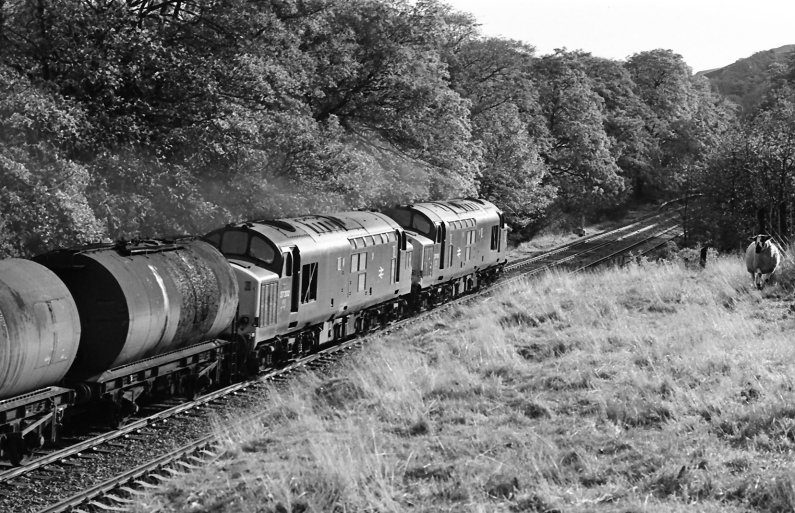
Copyright: J K Wallace, all rights reserved 2013
On 26 October 1981Class 37s 37202 (nearest camera) and 37153 head towards Copy Pit, Cornholme and Hall Royd Junction with a tanker train that originated from Preston Docks.
